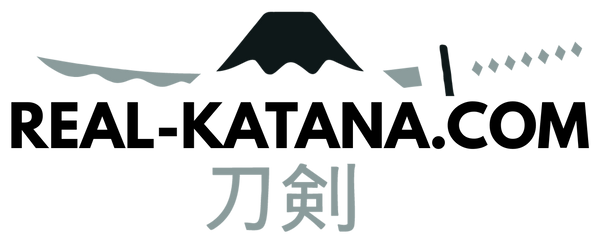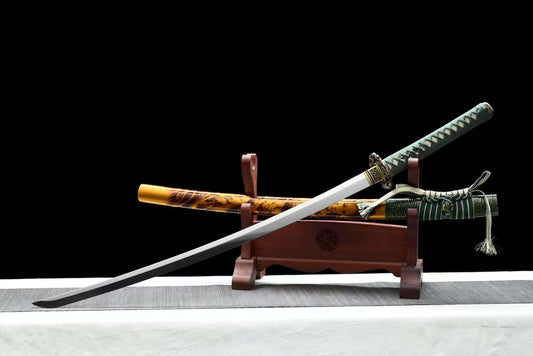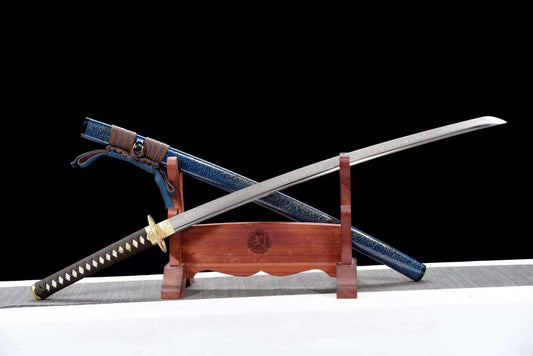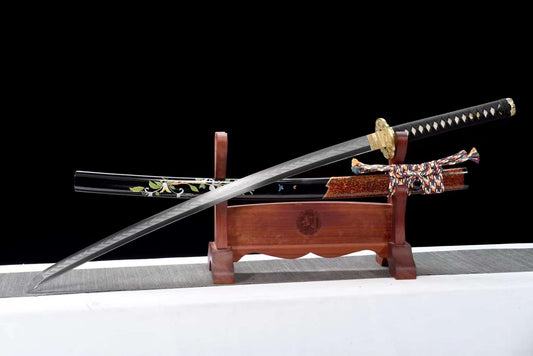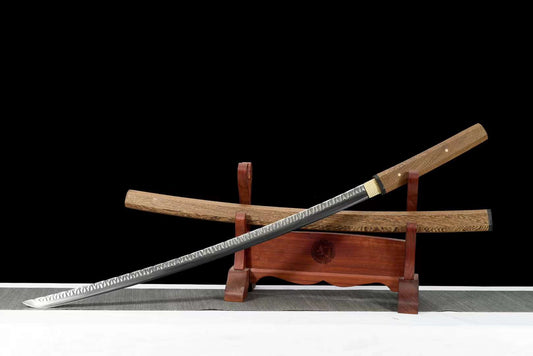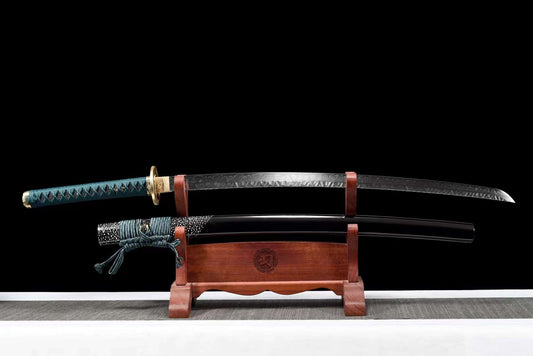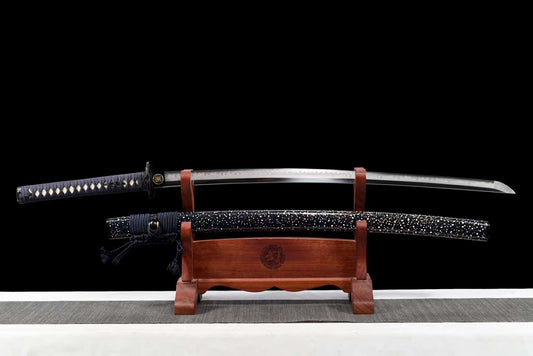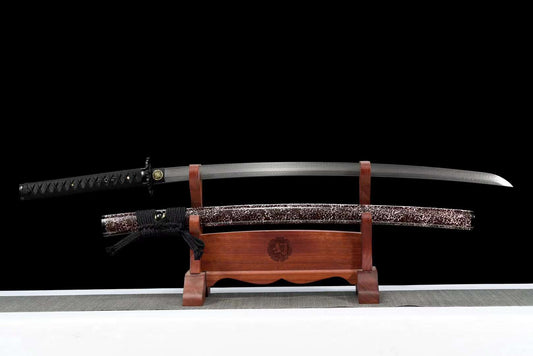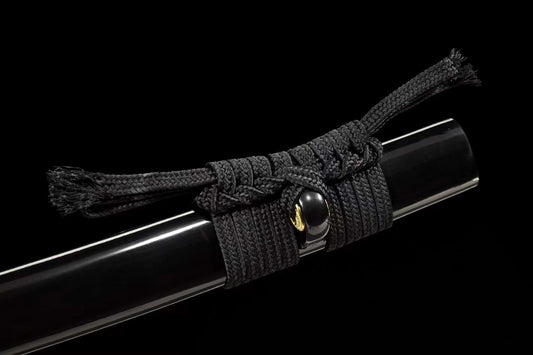Mid Range Katana — Best Value Blades Between $300–$500
Find your sweet spot of refinement and reliability with a mid range katana. In the $300 to $500 bracket, blades step up in steel quality, geometry precision, and finishing, delivering a commanding presence for display and a confident, balanced feel for cosplay and creative shoots. If you want more than entry-level polish without leaping to boutique pricing, this category offers the most compelling value-to-finish ratio.
What to Expect from a Katana $300–$500
Expect cleaner lines along the shinogi, a well-defined yokote, and kissaki shaping that reflects light with intention. Fittings tighten up noticeably, with firm ito wrapping over quality samegawa, a well-seated habaki, and scabbard lacquer that frames the blade instead of competing with it. The result is a mid-range Japanese sword that reads crisply on camera and holds its own in a glass case.
Materials & Heat Treatment
You’ll commonly see 1060 and selective upgrades toward 1095 or T10 for sharper lines and stronger edge personality, as well as resilient options like 65Mn spring steel for forgiving handling. Through-hardened builds emphasize uniform strength and easy care, while clay-tempered versions introduce a natural hamon that adds depth and contrast without washing out the bevels. Choose a bohi for agility and audible tachikaze, or go no-bohi for added mass and an uninterrupted reflection line.
Who This Collection Is For
Collectors seeking a centerpiece with refined finishing, cosplayers who want a balanced blade that photographs beautifully under LEDs, and enthusiasts curating themed shelves will all appreciate how a mid range katana elevates a setup. The improved polish and geometry create cleaner highlights, while the upgraded fittings and lacquer deliver a cohesive, premium silhouette.
How to Choose Your Mid-Range Katana
Start with your desired blade feel. If you prefer speed and ease of posing, opt for a bohi configuration and a balanced center of mass. If you want gravitas and a mirror-like visual plane for cinematic shots, select a no-bohi profile. For steel, choose 1060 when you want approachable toughness, step to 1095 or T10 for crisper edges and pronounced linework, or select 65Mn spring steel for stability and shock resistance. Match fittings to your theme—minimal monochrome for modern rooms or traditional motifs for heritage-inspired displays.
Care & Presentation
Keep the finish pristine by storing in a dry environment, wiping surfaces gently after handling, and applying a light protective oil film as needed. A quality katana stand protects the saya and fittings while setting the correct viewing angle for reflections along the bevels. Avoid edge-to-edge contact and abrasive materials to preserve polish, linework, and any visible hamon.
FAQ
Is $300–$500 enough for a display-worthy katana?
Yes. The mid range katana tier typically delivers meaningful upgrades in geometry, fittings, and finish, producing a piece that looks premium in photos and on the shelf.
Should I prioritize bohi or no-bohi at this level?
Choose bohi for agility and audible feedback during movement. Choose no-bohi for added mass and an unbroken mirror line that enhances formal, gallery-style display.
Which steel should I choose in the mid range?
1060 balances toughness and ease of care. 1095 and T10 push edge clarity and polish depth. 65Mn spring steel emphasizes resilience and forgiving handling. Pick based on whether you value durability, edge personality, or photogenic contrast.
Refinement without excess.
Select a mid range katana between $300 and $500 and showcase a blade where thoughtful steel, deliberate geometry, and curated fittings come together for an undeniably premium look—without the luxury price tag.
